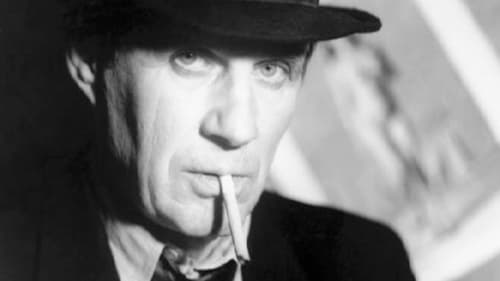
Self
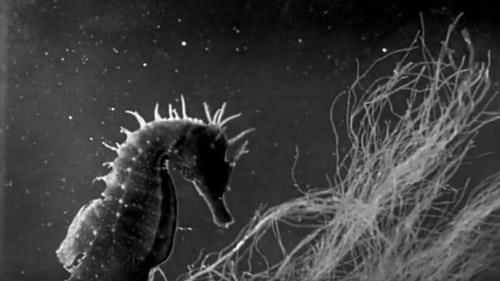
Director
The mesmerizing, utterly unclassifiable science films of Jean Painlevé (1902-89) have to be seen to be believed: delightful, surrealist-influenced dream works that are also serious science. The French filmmaker-scientist-inventor had a decades-spanning career in which he created hundreds of short films on subjects ranging from astronomy to pigeons to, most famously, such marine-life marvels as the sea horse and the sea urchin.

Director
The Sounds of the Sounds of Science is a score written by Yo La Tengo for filmmaker Jean Painlevé. It contains 78 minutes of instrumental music to accompany his eight short documentary-style films shot underwater.

Interviewee
This documentary about the life and work of filmmaker Jean Painlevé was originally presented in eight parts on French television. It was edited to remove duplicated material from its original length of 240 minutes.

Self (uncredited)
An enthusiastic grandfather sits with children in a Parisian park talking about pigeons. First. their physical appearance—eye, wings and tail, and color—and their varieties. Then, he encourages the children to imitate their walk. He points out courtship and mating rituals, then provides an illustrated discussion of how they eat. This section is punctuated by a flock of pigeons fighting over a small, hard ball each wants to eat; the narrator's describes it as if it were a soccer match. He concludes with a discussion of pigeons taking off, landing, and flying; he uses slow motion and stop-time photography to show his audience.

Producer
An enthusiastic grandfather sits with children in a Parisian park talking about pigeons. First. their physical appearance—eye, wings and tail, and color—and their varieties. Then, he encourages the children to imitate their walk. He points out courtship and mating rituals, then provides an illustrated discussion of how they eat. This section is punctuated by a flock of pigeons fighting over a small, hard ball each wants to eat; the narrator's describes it as if it were a soccer match. He concludes with a discussion of pigeons taking off, landing, and flying; he uses slow motion and stop-time photography to show his audience.

Director
An enthusiastic grandfather sits with children in a Parisian park talking about pigeons. First. their physical appearance—eye, wings and tail, and color—and their varieties. Then, he encourages the children to imitate their walk. He points out courtship and mating rituals, then provides an illustrated discussion of how they eat. This section is punctuated by a flock of pigeons fighting over a small, hard ball each wants to eat; the narrator's describes it as if it were a soccer match. He concludes with a discussion of pigeons taking off, landing, and flying; he uses slow motion and stop-time photography to show his audience.
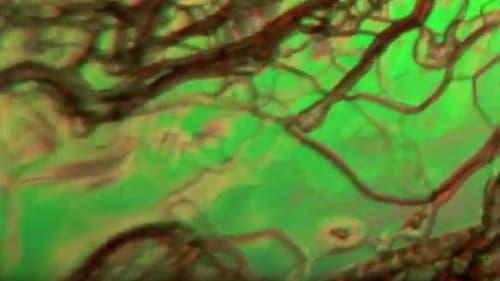
Director
Title cards introduce images we watch without narration; they are displays of shape and color. François de Roubaix's electronic music accompanies these images, photographed under a polarizing microscope. The crystals appear to move like tiny organisms: small four-part fans share the frame with flowing lines of pink. Multiple patterns appear side by side.

Director

Director of Photography
In mud flats along the coast of Brittany we watch acera, small ball-shaped mollusks that are about two inches in diameter. They rest in mud; then, in water, they dance, their skirt-like hood spreading like a dervish's cassock. They spin and spin. The film adds musical accompaniment. We watch them mate and secrete eggs: acera are both male and female, and can form chains with other acera in which they simultaneously mate as a male and as a female. The eggs hatch, and the cycle begins again.

Producer
In mud flats along the coast of Brittany we watch acera, small ball-shaped mollusks that are about two inches in diameter. They rest in mud; then, in water, they dance, their skirt-like hood spreading like a dervish's cassock. They spin and spin. The film adds musical accompaniment. We watch them mate and secrete eggs: acera are both male and female, and can form chains with other acera in which they simultaneously mate as a male and as a female. The eggs hatch, and the cycle begins again.

Director
In mud flats along the coast of Brittany we watch acera, small ball-shaped mollusks that are about two inches in diameter. They rest in mud; then, in water, they dance, their skirt-like hood spreading like a dervish's cassock. They spin and spin. The film adds musical accompaniment. We watch them mate and secrete eggs: acera are both male and female, and can form chains with other acera in which they simultaneously mate as a male and as a female. The eggs hatch, and the cycle begins again.

Director
The one-celled long and slender diatom, up close: discovered in 1703 with the invention of the microscope. We observe them magnified 10,000 times: water expelled through the skeleton, mucilage constantly emitted, allowing it to glide. Their energy comes from sunlight. They divide and disperse. The narrator, conversing with a young woman, says their remains cover one-third of the earth's surface. They have uses in petroleum, explosives, and polish. Some live in isolation, some in colonies, like elaborate fans. They can move in clusters. Many small animals eat them. We watch them slide on each other in long strings.

Director
An octopus slithers into a narrow crack near the shore; we see its eye up close. It feeds on a crab. In spring it's time to mate. A male grabs a female; he inserts his third arm in her respiratory cavity. We watch another pair: a larger female is the aggressor here. Mating is repeated over hours and days. The female releases strings of fertilized eggs that hang from the roof of a nest. She guards her spawn for a month, fanning the strings to circulate water for oxygen and cleanliness.

Director of Photography
After a comic introduction, we look closely at a shrimp. Eyes on stilts, color patterns, pinchered walking feet, a rostrum. We watch shrimp eat using a strong claw and a fine one; we watch digestion. After eating, shrimp clean themselves. The female lays eggs that cling to her feet. After three weeks, the eggs hatch explosively. Few larvae live to adulthood. We watch an adult shed its carapace with a final leap, leaving it vulnerable; other shrimp attack.

Producer
After a comic introduction, we look closely at a shrimp. Eyes on stilts, color patterns, pinchered walking feet, a rostrum. We watch shrimp eat using a strong claw and a fine one; we watch digestion. After eating, shrimp clean themselves. The female lays eggs that cling to her feet. After three weeks, the eggs hatch explosively. Few larvae live to adulthood. We watch an adult shed its carapace with a final leap, leaving it vulnerable; other shrimp attack.

Director
After a comic introduction, we look closely at a shrimp. Eyes on stilts, color patterns, pinchered walking feet, a rostrum. We watch shrimp eat using a strong claw and a fine one; we watch digestion. After eating, shrimp clean themselves. The female lays eggs that cling to her feet. After three weeks, the eggs hatch explosively. Few larvae live to adulthood. We watch an adult shed its carapace with a final leap, leaving it vulnerable; other shrimp attack.

Director
At a marine biology station, a clump of algae reveals polyps, stomachs with limbs, limbs with buds, buds with poison cells. This animal reproduces by buds, which we watch close up in time-lapse images. In another kind of jellyfish, the buds grow inside then live outside for a few days until being on their own. Another produces eggs, sometimes self-fertilized. Some single eggs become buds with colonies. Another clump gathered at low tide consists of filaments of a colony - plumes with poison ends. In images taking 72 hours, we see filaments grow and produce a feeding organ from which a plume emerges. New jellyfish emerge from buds twice a day at set times to form a new colonies.

Editor
Two kinds of starfish, the brittle and the feather. The brittle star moves its arms alone, without the aid of suckers. Underneath is a single opening. Stalks move food close to the mouth and move waste away. We see vents, used in reproduction and breathing. We watch the hatched young expelled into the water. The camera shows us brittle stars' intricate patters. We observe feather stars in clusters, like ferns. One turns over slowly; arms have branches with stalks for breathing and gathering microscopic food. Reproductive organs are inside branches. We see eggs develop at 1,400 nature's speed. Larvae emerge, 0.1 mm long. They grow. A feather star takes a walk.

Director of Photography
Two kinds of starfish, the brittle and the feather. The brittle star moves its arms alone, without the aid of suckers. Underneath is a single opening. Stalks move food close to the mouth and move waste away. We see vents, used in reproduction and breathing. We watch the hatched young expelled into the water. The camera shows us brittle stars' intricate patters. We observe feather stars in clusters, like ferns. One turns over slowly; arms have branches with stalks for breathing and gathering microscopic food. Reproductive organs are inside branches. We see eggs develop at 1,400 nature's speed. Larvae emerge, 0.1 mm long. They grow. A feather star takes a walk.

Director
Two kinds of starfish, the brittle and the feather. The brittle star moves its arms alone, without the aid of suckers. Underneath is a single opening. Stalks move food close to the mouth and move waste away. We see vents, used in reproduction and breathing. We watch the hatched young expelled into the water. The camera shows us brittle stars' intricate patters. We observe feather stars in clusters, like ferns. One turns over slowly; arms have branches with stalks for breathing and gathering microscopic food. Reproductive organs are inside branches. We see eggs develop at 1,400 nature's speed. Larvae emerge, 0.1 mm long. They grow. A feather star takes a walk.

Editor
Alexander Calder created and performed one of the most important and beloved works, his miniature circus (1926-1931). More than twenty years later Jean Painleve made Le Grande Cirque Calder 1927, begun in 1953 and completed in 1955.

Director
Alexander Calder created and performed one of the most important and beloved works, his miniature circus (1926-1931). More than twenty years later Jean Painleve made Le Grande Cirque Calder 1927, begun in 1953 and completed in 1955.

Director
A complex creature. Regular underwater photography, magnified close-ups, and film through a microscope present sea urchins. We see their mouth and five teeth close and open. After injecting one with gelatin, the shell is removed and we see the muscle structure, digestive tube, and reproductive organs. Magnified stems reveal suction cups; stems lengthen and contract allowing the sea urchin to move. We see microscopic calcareous stems; at their ends are jaws with various uses. Cilia everywhere are in constant motion, stirring up water and debris. African music on the soundtrack suggests a shuffle dance.

Director
In a freshwater pond, it's "eat or be eaten." A dragonfly larva eats a midge; a water beetle larva eats a damselfly larva. Snail larvae grow. A beetle larva eats one. Up close, we see the eating apparatus of a damselfly larva—with a retractable hook beneath mandibles. Some creatures bite and chew, others suck. A water beetle larva holds on to its prey, injects a poison that turns the victim's insides to soup, and then sucks it dry. We watch one eat a damselfly larvae and then another water beetle larva. Some have ingenious ways to camouflage themselves, like the water scorpion, and to breathe air while hunting under water. Caddisfly larvae hide in debris, then eat.

Director
A series of 5 choreographed sketches starring Jacqueline Clédon and Michèle Nadal.
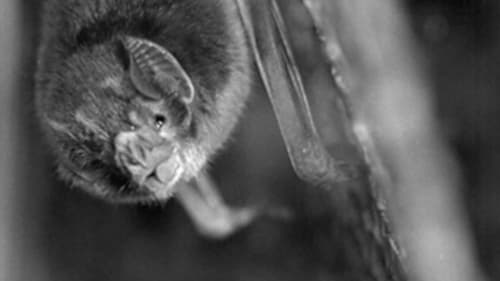
Director
After a look at some strange creatures, the narrator and camera take us to the Chaco forest, on the borders of Paraguay, Argentina, and Brazil, where a vampire bat lives, desmodus rotondus, attacking wildlife and domesticated creatures, killing small ones by draining all their blood and killing large ones by leaving a parasite in their bloodstream. Four inches long, with a 12-inch wingspread, we see it walk, approach a victim, pull out a patch of fur large enough for it to engage its teeth, then lap six or seven ounces of blood. Its saliva may be an anesthetic keeping its victims from waking. A stub nose and harelip contribute to its efficiency and its hideous look.

Camera Operator
Shot primarily by twelve French cameramen (led by filmmakers Jean Painlevé and Jean Grémillon), in August 1944, this film captures the final French insurrection in German-occupied Paris, the surrender of the Germans, and the mass celebration in the streets. (There is an English-language version narrated by Noel Coward.)
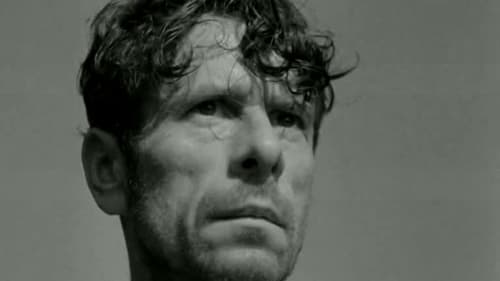
Special Effects
A vagabond arrives in a Flemish village. He's looking for his childhood love, but the villagers believe he has the evil eye.

Director
Jean Painlevé short film examining proportion and its effects on organisms.

Director
Jean Painlevé short film examining population explosion and decline.

Director
We begin on planet Earth, with a demonstration of measuring distances using triangulation. Then, an imaginary voyage begins from earth to the moon, on to Mars, Saturn, the closest star (besides the sun), and beyond to the edge of our universe. The film depicts imagined landscapes, and it speculates on universes beyond ours. It ends with philosophical musings about the significance of Earth.

Producer
Perrault's fairy tale presented in claymation with choral voices. Bluebeard goes courting, all six of his wives having died. He arrives at the house of a widow with two daughters. He's greatly feared, but he overcomes objections with a generous dowry. One sister (Anne) refuses him; the other accepts. At his castle, the damsel delights in precious minutes away from Bluebeard in the rose garden. The Saracens declare war; Bluebeard goes off to fight them, leaving the keys to the castle in the damsel's hands. He warns her not to enter the forbidden room. As war rages, she discovers riches in the castle and then enters the forbidden room. Will Bluebeard discover her act? Can she escape death?

Director
Perrault's fairy tale presented in claymation with choral voices. Bluebeard goes courting, all six of his wives having died. He arrives at the house of a widow with two daughters. He's greatly feared, but he overcomes objections with a generous dowry. One sister (Anne) refuses him; the other accepts. At his castle, the damsel delights in precious minutes away from Bluebeard in the rose garden. The Saracens declare war; Bluebeard goes off to fight them, leaving the keys to the castle in the damsel's hands. He warns her not to enter the forbidden room. As war rages, she discovers riches in the castle and then enters the forbidden room. Will Bluebeard discover her act? Can she escape death?

Director
The film begins with methodical descriptions of one-dimensional, two-dimensional, and three-dimensional space. It then looks at a two-dimensional world inhabited by flat mice. It imagines how a human, from the third dimension could interact with that world. It then suggests how beings from a fourth dimension might interact with us. Next the film posits time as a fourth dimension, with scenes to aid comprehension. An off-screen narrator, graphs, and clever photography provide explanations and illustrations. The film asks viewers to use their imaginations.
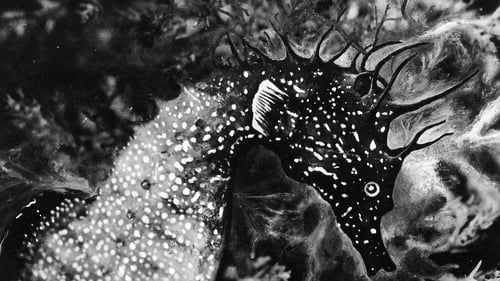
Producer
Examines the sea horse, the only fish that swims upright. We watch it use its prehensile tail to wrap around plants and other sea horses. A frontal bulge houses organs including an air ballast. Three fins propel this fish. We see a female place her eggs in a male's pouch where they are fertilized and nurtured until birth in violent contractions. Inside the pouch are nurturing blood vessels. We then follow the growth of an embryo, greatly magnified: we examine its heart beating and its dorsal fin moving. Young sea horses attach themselves to each other. The film ends with images of many sea horses moving on the ocean floor, superimposed on a horse race.

Writer
Examines the sea horse, the only fish that swims upright. We watch it use its prehensile tail to wrap around plants and other sea horses. A frontal bulge houses organs including an air ballast. Three fins propel this fish. We see a female place her eggs in a male's pouch where they are fertilized and nurtured until birth in violent contractions. Inside the pouch are nurturing blood vessels. We then follow the growth of an embryo, greatly magnified: we examine its heart beating and its dorsal fin moving. Young sea horses attach themselves to each other. The film ends with images of many sea horses moving on the ocean floor, superimposed on a horse race.

Director
Examines the sea horse, the only fish that swims upright. We watch it use its prehensile tail to wrap around plants and other sea horses. A frontal bulge houses organs including an air ballast. Three fins propel this fish. We see a female place her eggs in a male's pouch where they are fertilized and nurtured until birth in violent contractions. Inside the pouch are nurturing blood vessels. We then follow the growth of an embryo, greatly magnified: we examine its heart beating and its dorsal fin moving. Young sea horses attach themselves to each other. The film ends with images of many sea horses moving on the ocean floor, superimposed on a horse race.

Director
Painlevé’s first film on animal behavior, focusing on the Hermit Crab. On this film we see the Hermit Crab trying to find shelter.

Director
Jean Painlevé is interested here, with the help of Eli Lotar, in crabs and shrimps. He is particularly interested in detailing their anatomy and observing their mating and fighting behavior.

Director
Jean Painleve short about an experimental canine surgery.

Director

Director
In close-ups and extreme close-ups, we watch two small species of marine crustaceans, the slender long-legged stenorhynchus and the clumsy, short-legged hyas. To blend in, both cover themselves with found objects, such as algae and sponges. We watch them move, eat, greet each other, and fight. They have small mandibles and large claws. Near them are spirograph worms, 6 inches long, with a plume of branchiae that fan out like exploding fireworks. We see vibrating cilia, 0.001 mm long, on the branchiae, sending food toward the mouth at the plume's center. Chopin's music and an off-screen narrator suggest we're watching a ballet.

Director
A close-up look at sand urchins and rock urchins. At the seashore, a man digs up a sand urchin. We look closely. He sets it back in the sand, and it burrows out of sight. Its intestines take nutrients out of sand. Using magnification 200,000 times normal size, we see a rock urchin's spines with suckers on the end; a drawing illustrates how they work. A sea urchin walks toward a rock. We see three-fingered jaws—pedicellaria at the end of flexible stems—take in algae and other bits. We also see cilia less than 0.001 ml in length; their motion constant, creating whirlpools. On the shore again, we watch the setting sun. Occasional titles in French tell us what to watch for.

Director
Titles in French and English help us know what we're seeing. In all waters, daphnia abound. They are crustaceans about 2 ml long, with one eye that turns in all directions. Antennae enable daphnia to move: in a close up magnified 150,000 times, we see the muscles of the antennae pulse. We see the eye, the nerve mass, blood globules, and the heart, beating several times per second. The intestine forms a long line. All are females; eggs develop above the intestine. New generations come rapidly. Inside each daphnia are tiny infusoria; we watch them clean the intestine of a dead daphnia. An enemy, the hydra, approaches. A daphnia dies, but many remain.

Mathusalem (or Methuselah) is a 1922 play by Ivan Goll, considered a precursor of the theater of the absurd. The 1927 run of the play saw five sequences-- some of Jean Painlevé's earliest film work-- projected against a backdrop of white clouds.

Director
Mathusalem (or Methuselah) is a 1922 play by Ivan Goll, considered a precursor of the theater of the absurd. The 1927 run of the play saw five sequences-- some of Jean Painlevé's earliest film work-- projected against a backdrop of white clouds.
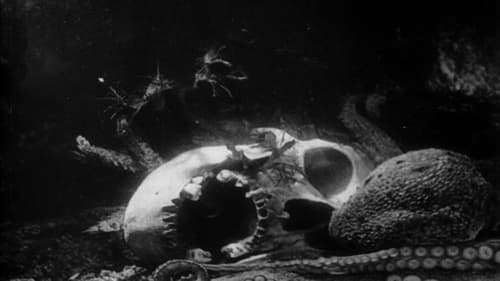
Director
An octopus slithers over objects on land—a doll, a skull—then oozes along the shore into the sea. It secretes its ink. The camera follows it along rocks into deeper water, watching closely as it breathes. Its eye is closed then open. Simple titles, in French and German, suggest what to watch. The octopus alternates the use of breathing tubes on either side. It changes color as cells on its skin contract or dilate. Extreme magnification helps us see these changes. Two struggle, one dies. On shore, fishermen catch them and put them in pails. A single tentacle still has life. Back in the sea, two octopi attack a crab. Soon only a couple of crab legs are visible in the mouth of the victor.

Director
An educational film, a movie through a microscope, in two parts. Within minutes after the egg drops in the water, fertilization occurs and contractions start. Soon, in a fertilized egg, we see the germinal disc divide into two blastomeres. Divisions continue; contractions re-occur at the cap as it covers the egg. Title cards in French tell us what to watch for. Muscular movements and circulation appear; the heart beats. In part two, we see blood circulation begin as red cells develop on the surface of the yoke. They mass toward the heart. Arteries form, blood flows. The egg hatches and blood flows to new areas.

Director









































